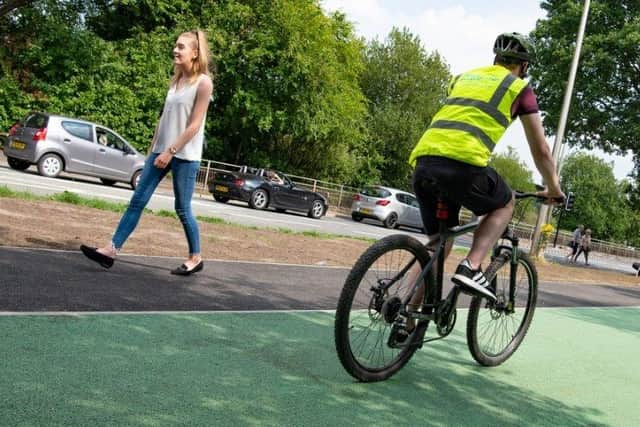Fewer people are cycling weekly in Wigan than two years ago
and live on Freeview channel 276
The first coronavirus lockdown was characterised by shortages at bike shops and councils across England reorganising their streets to encourage walking and cycling.
But new figures from the Department of Transport shows the proportion of people regularly cycling has decreased compared to the year which marked the first lockdown.
Advertisement
Hide AdAdvertisement
Hide AdThe annual Active Lives Survey measures how often individuals exercise and is carried out continuously throughout the year.


According to the survey, 5.1 per cent of adults in Wigan biked at least once a week in the year to November 2021, which was down from 9.1 per cent the year before.
This was also a drop from 9.1 per cent in the year to November 2019, before the coronavirus pandemic broke out.
Sustrans, a campaign group for better walking and cycling, said the figures show there is still a need to make active travel "safe, accessible, and welcoming".
Advertisement
Hide AdAdvertisement
Hide Ad"During the pandemic, when there were fewer cars on the road, the public took to their bikes.
"It’s sad to see this return to expensive and pollutant car-use, especially as the urgency for alternatives has only increased, alongside the cost of living."
David Proctor, assistant director for planning and regeneration at Wigan Council, said: “2020 was an unusual year for many reasons; the pandemic saw large increases in people walking and cycling for leisure and daily exercise during the height of restrictions, and it became many people’s preference for travel as they looked to be in open air, not in an enclosed space. This means it is difficult to compare 2020 and 2021.
“Wigan Council are investing to create safer and more attractive cycle lanes, to help people overcome often the biggest barrier to cycling- concerns around safety. This includes our mission to develop a fully joined up ‘active travel’ network- the Bee Network.
Advertisement
Hide AdAdvertisement
Hide Ad“In just the last few years we have completed a number of different walking and cycling schemes, including the Victoria Street junction in Wigan, the canal towpath along Bridgewater Canal to connect to Salford and beyond by bike, and first phase of works to connect Leigh, Atherton and Tyldesley.
“We have lots more planned, with new, and improved strategic walking and cycling networks proposed across Leigh, Atherton and Tyldesley and Standish, Wigan, and Ashton.
“The Council is going beyond just providing the infrastructure; we are working to change people’s behaviours, providing cycling sessions for all ages, Bikeability courses for children, and events such as the recent Cycle Three Sisters which saw over 900 attend.”
The National Travel Survey, also compiled by the Department for Transport, shows people in England on average drove 300 times in 2021, a rise on 295 the year before, but still far fewer than the 380 trips taken by car in 2019.
Edmund King, president of the AA motoring association, said the Government has missed a chance to promote walking and cycling better.
Advertisement
Hide AdAdvertisement
Hide Ad“The reversal of lockdown trends points to the Government and councils’ failure to seize the opportunity to ingrain and promote more of those changed behaviours into the way the UK travels.”
Analysis by the AA suggests that even the rising cost of fuel may not push drivers to swap four wheels for two.
In July the organisation polled 15,000 drivers, finding that just two per cent had switched to walking or cycling as a result of higher fuel prices.
